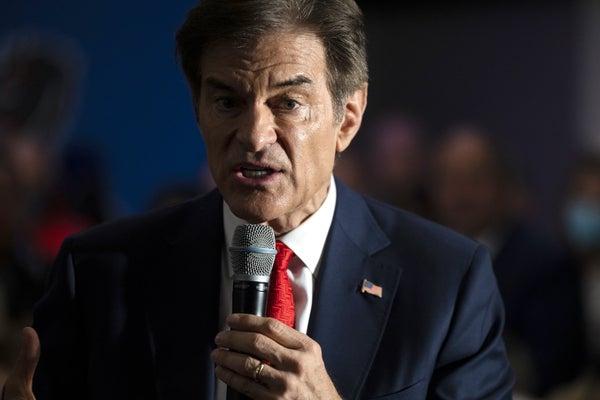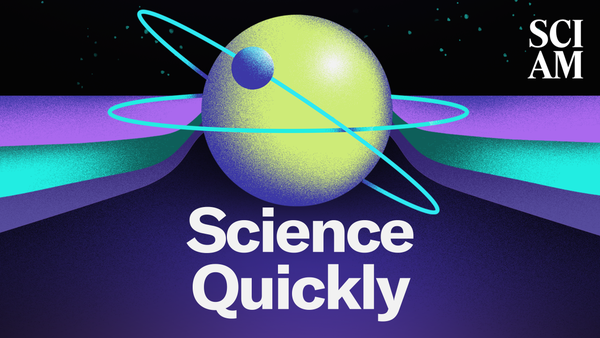www.technologyreview.com
President-elect Donald Trumps America First plan to enact huge tariffs on imported goods threatens to jack up the cost and slow down the development of US cleantech projects. On the campaign trail, Trump pledged to enact 10% to 20% across-the-board tariffs on all overseas products, 60% to 100% tariffs on Chinese goods, and 25% to 100% tariffs on products from Mexicothe last in part to prevent the flow of goods from Chinese companies setting up manufacturing plants there and in part to force Mexico to halt migration into the US. These plans could easily add billions of dollars to the prices that US companiesand therefore consumerspay for batteries and electric vehicles, as well as the steel used to build solar farms, geothermal plants, nuclear facilities, transmission lines, and much more. This is going to raise the cost of clean energy and that will slow down the revolution, says David Victor, a professor of public policy at the University of California, San Diego, in reference to the otherwise accelerating development of low-emissions industries. Trumps campaign rhetoric certainly hasnt always translated into enacted policies. But he has consistently asserted that tariffs will force companies to produce more goods on American soil, restoring US manufacturing, creating jobs, and easing the federal deficitwhile inflicting economic pain on international economic rivals like China. Tariffs are the greatest thing ever invented, Trump proclaimed at a rally in Flint, Michigan, in September. But despite what Trump says or understands about tariffs, they are effectively a domestic tax paid by the US businesses purchasing those goods and passed on to American consumers in the form of higher prices. (Plenty of Republicans agree.) Many economists and international affairs experts argue that such trade restrictions should be applied judiciously, if at all, because they can boost inflation, trigger retaliatory trade policies, chill investment, and stall broader economic growth. The precise impact of Trumps proposed tariffs on any given sector will depend on how high the incoming administration ultimately sets those fees, how they compare to existing tariffs, where else the goods in question can be purchased, how companies and nations respond over time, and what other policies the administration enacts. But here are three areas where the costs of materials and products that are crucial to the energy transition could rise under the plans that Trump sketched out on the campaign trail. Batteries China is one of the worlds largest producers of EVs, batteries, solar cells, and steel, but in part due to previous trade restrictions, the US doesnt rely heavily on the nation for most of these products (at least not directly). But theres one exception to that, and its batteries, says Antoine Vagneur-Jones, head of trade and supply chains at BloombergNEF, a market research firm. China absolutely dominates the battery sector. According to a 2022 report from the International Energy Agency, the country produces around 85% of the worlds battery anodes, 70% of its cathodes, and 75% of its battery cells. In addition, more than half of the global processing of lithium, cobalt, and graphite, key minerals used to produce lithium-ion batteries, occurs in China. The US imported some $4 billion worth of lithium-ion batteries from China in the first four months of this year, according to BloombergNEF. A Stihl employee assembling rechargeable batteries for tools.BERND WEI'BROD/PICTURE-ALLIANCE/DPA/AP IMAGES The US already has a variety of tariffs on Chinese goods in place. President Biden preserved many of the ones that Trump enacted during his first term, and he even increased a number of them earlier this year. The White House said the action was taken in response to what it described as Chinas unfair trade practices. But it was just the latest action in a long-running, bipartisan quest to counter Chinas growing economic strength and grip on key components of the high-tech and cleantech sectors. Still, Trumps proposed 60% to 100% tariffs would far exceed the ones currently set on batteries, which stand at 28.4% for EV batteries. On a $4 billion purchase, those border fees would add up to $2.4 billion at the low end, more than double the added cost under the current tariff rate, or (perhaps obviously) $4 billion at the high end, all else being equal. Vagneur-Jones notes that even with a 60% tariff, Chinese batteries are so inexpensive that they would remain cost competitive with US-produced ones. But this would still represent a big jump over current costs for companies that need to buy batteries for EVs, home solar systems, or grid storage plants. And because China is such a dominant producer, US businesses would have limited paths for purchasing those batteries from other sources at similar volumes. Steel Steel is used in just about every single cleantech or climate-tech project today. Strong and durable, it forms vital parts of wind turbines, hydropower plants, and solar farms. All that steel has to come from somewhere, and for the most part, its not the US. Last year, the US imported 3.8 million tons of steel mill products valued at $4.2 billion from Mexico, according to data from the International Trade Administrations Global Steel Trade Monitor. Steel imported to the US from Mexico, the nations second-largest supplier of the metal alloy, generally isnt subject to significant tariffs, so long as it was originally melted and poured in Mexico, Canada, or the United States. So a 25% to 100% tariff on the same value of steel would cost US companies an extra $1.1 billion to $4.2 billion (all else being equal and without accounting for fees on certain steel products.) (Earlier this year, the Biden administration did impose a 25% tariff on imports of steel from Mexico that were originally melted and poured in other nations, as part of an effort to prevent major suppliers like China from sidestepping tariffs. But those taxes apply only to a small fraction of shipments.) Rolls of galvanized steel.ADOBE STOCK Meanwhile, Trumps 10% to 20% tariff on all nations could add up to that same amount to the cost of steel from other suppliers around the world, depending on how those compare to each nations existing tariffs. That may, for example, lump up to $1.6 billion onto the nearly $8 billion worth of steel the US imported last year from Canada, the nations largest source (all else being equal and without accounting for fees on certain steel products.) Those fees would boost the costs for any US company that uses steel that isnt supplied by domestic producers, including cleantech businesses building demo projects or commercial-scale facilities. Plenty of projects will be spared, though. Those that are receiving various federal loans, grants, or tax incentives are generally already required to source their steel from the US, in which case they wouldnt be affected by such tariffs, explained Derrick Flakoll, a North America policy associate at BloombergNEF, in an email. But competition to secure limited supplies of domestic steel is likely to get more intense. The US dominated global steel production during much of the last century, but its now ranked a distant fourth, generating about one-twelfth as much as China last year, according to the World Steel Association. We went down the path of globalization, says Joshua Posamentier, co-founder and managing partner of Congruent Ventures, a climate-focused venture firm in San Francisco. We are now utterly dependent on all the other parts of the world. Electric vehicles The US is the worlds largest importer of EVs, purchasing nearly $44 billion dollars worth of battery, hybrid, and plug-in hybrid cars and trucks last year, according to the World Trade Organization. Its the biggest export market for Germany and South Korea, according to BloombergNEF. If Trump enacted a 10% to 20% tariff on all foreign goods, it would add between $4.4 and $8.8 billion in costs on the same volume of EV purchases (all else being equal and without adjusting for nation-by-nation fees already in place). His still higher proposed tariffs on Mexico would addsubstantially bigger premiums on vehicles built in the country, which exported more than 100,000 EVs produced by auto giants including Ford and Chevrolet last year, according to the Mexican Automotive Industry Association. Meanwhile, BMW, Tesla and Chinese companies BYD and Jetour have all announced plans to produce EVs in Mexico. A Porsche employee checks the paint on the body of an all-electric Porsche Macan, at the automaker's plant in Leipzig, Germany. JAN WOITAS/PICTURE-ALLIANCE/DPA/AP IMAGES While China is the worlds largest manufacturer of EVs, Trumps hopes of levying a 60% to 100% tariff on the nationsgoods probably wouldnt have a huge impact on that sector. Thats because the nation already imports very few Chinese EVs. Plus, President Biden himself recently ratcheted up the tariff rate to 100%. The broader impacts on EVs will likely be further complicated by the incoming Trump administrations reported plans to roll back federal rules and subsidies supporting the sector, including parts of the Inflation Reduction Act. Repealing key provisions of Bidens signature climate law would work against the goal of countering Chinas dominance, as those federal incentives have already triggered a development boom for US-based battery and EV projects, says Albert Gore, executive director of the Zero Emission Transportation Association.It would undercut a lot of investment into manufacturing across the United States, he says.The big concern Applied sensibly, tariffs can help certain domestic industries, by enabling companies to compete with the lower costs of overseas producers, catch up with manufacturing innovations or product improvements, and counter unfair trade practices. Some US cleantech companies and trade groups, including solar manufacturers like First Solar and Swift Solar, have argued in favor of stricter trade restrictions. Earlier this year, those and other companies represented by the American Alliance for Solar Manufacturing Trade Committee petitioned the federal government to investigate potentially illegal trade practices in Cambodia, Malaysia, and Vietnam. They alleged that China and Chinese-based companies have circumvented trade restrictions by shipping goods through distribution hubs in those countries and dumped goods priced below production costs in the US to seize market share. Neither the companies nor the trade association responded to inquiries from MIT Technology Review concerning their view of Trumps proposals before press time. Nor did the American Clean Power Association, which represents developers of solar farms and has opposed recent duty increases, which can drive up the costs of such projects. Over time, Trumps tariffs may indeed compel companies to bring more of their manufacturing operations back to the US and help diversify the global supply chain for crucial goods, UC San Diegos Victor says. The tariffs are likely to fuel more mining and processing of critical minerals like lithium and nickel in the US, too, given both the increased costs on imported materials and the administrations plans to roll back environmental and permitting rules. They love extractive sectors, says Jonas Nahm, an associate professor at the Johns Hopkins School of Advanced International Studies. But the big concern is that Trumps plans to boost tariffs, cut government spending, and enact other policy changes could stall the broader economy, says Rachel Slaybaugh, a partner at DCVC, a San Francisco venture firm. Indeed, the combined effects of Trumps proposals, including his pledge to deport hundreds of thousands to millions of workers, may drive up US inflation more than 4% by 2026 while cutting gross domestic product by at least 1.3%, according to an analysis by the Peterson Institute for International Economics, a nonpartisan research firm in Washington, DC. The tariffs alone could cost typical households an extra $2,600 per year. They may also trigger retaliatory measures by other nations, including China, which could impose their own steeper fees on US products or cut off the flow of crucial goods. Slaybaugh expects to see a continued slowdown in venture investments into cleantech companies in the coming months, as investors wait to see how aggressively the Trump administration implements the various pledges he made on the campaign trail. That pause alone will make it harder for startups to secure the capital they need to scale up or sustain operations. Even if the tariffs do eventually push US businesses to produce more of the goods currently being delivered cheaply and efficiently from elsewhere, it leaves a big problem when it comes to the clean energy transition: Given the higher expenses of US labor, land, and materials, it will simply cost far, far more to build the modern, low-emissions energy and transportation systems the nation now needs, Nahm says. At this point, after China has spent decades and vast sums locking down global supply chains, scaling up production, and driving down manufacturing costs, its foolhardy to believe that US businesses can easily step in and crank out these essential goods in relative global isolation, as Victor and his colleague, Michael Davidson, argued in a recent Brookings essay. Collaboration and competition, not hostility, are how we can catch up to the worlds largest supplier of clean technology products, they wrote.












